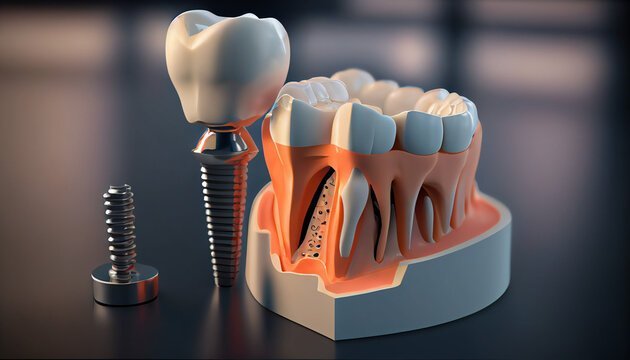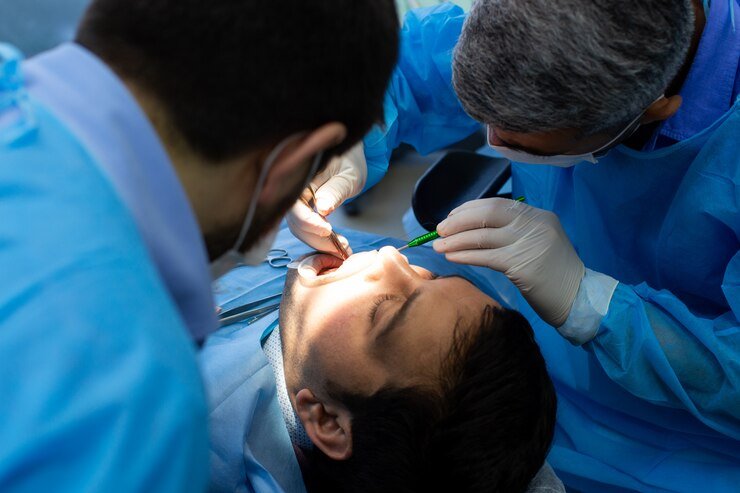Implants: Revolutionizing Healthcare and Restoring Quality of Life.
Implants, sophisticated medical devices designed to replace or support biological structures within the human body, have become integral to modern healthcare. From dental implants to artificial joints and advanced cardiovascular devices, implants play a pivotal role in improving the quality of life for millions of individuals worldwide. This article explores the diverse world of implants, their applications, technological advancements, and the transformative impact they have on patients’ well-being.
To Know More About It Please Click Here
Understanding Implants
- Definition and Purpose
- Implants are artificial devices designed to replace or augment a missing or damaged biological structure. They are strategically crafted to integrate seamlessly with the body, providing functional support or restoring aesthetics.
- Materials Used
- Implants are constructed from biocompatible materials such as titanium, stainless steel, ceramics, and polymers. These materials are chosen for their ability to interact harmoniously with the body without causing adverse reactions.
Types of Implants and Their Applications
- Dental Implants
- Dental implants serve as artificial tooth roots, anchoring prosthetic teeth securely. They are a groundbreaking solution for individuals with missing teeth, offering enhanced stability and functionality compared to traditional dentures.
- Orthopedic Implants
- Implants in orthopedics include artificial joints such as hip and knee replacements, as well as plates and screws for fracture fixation. These implants restore mobility and alleviate pain, significantly improving the quality of life for individuals with musculoskeletal issues.
- Cardiovascular Implants
- Devices like pacemakers, defibrillators, and stents are crucial cardiovascular implants. They regulate heart rhythm, prevent arrhythmias, and open narrowed blood vessels, addressing various cardiac conditions and ensuring proper blood circulation.
- Neurological Implants
- Neurostimulators and deep brain stimulation implants are employed to manage conditions like chronic pain, epilepsy, and movement disorders. These devices modulate neural activity, providing relief and enhancing patients’ neurological well-being.
- Breast Implants
- Breast implants are commonly used for cosmetic and reconstructive purposes. They offer women the option to enhance breast size or undergo reconstruction following mastectomy, contributing to both aesthetic and psychological well-being.
Technological Advancements
- Smart Implants
- Advancements in microelectronics have paved the way for smart implants equipped with sensors and communication capabilities. These implants can monitor physiological parameters, adjust treatment strategies, and transmit data to healthcare professionals for real-time monitoring.
- Biodegradable Implants
- Biodegradable implants are designed to gradually break down within the body over time. They are particularly useful in applications like bone repair, where the implant provides temporary support during the healing process.
- 3D Printing Technology
- 3D printing has revolutionized the customization of implants. Patient-specific implants can be precisely tailored to match individual anatomy, optimizing fit and functionality.
Challenges and Considerations
- Biocompatibility and Rejection
- While efforts are made to ensure biocompatibility, the risk of rejection or adverse reactions exists. Research focuses on developing materials that minimize these risks and enhance the body’s acceptance of implants.
- Infection Risk
- Implants can pose a risk of infection, especially during the surgical implantation process. Strict sterile procedures and antimicrobial coatings aim to mitigate this risk.
To Know More About It Please Click Here
Conclusion
Implants stand as a testament to human ingenuity in the realm of medical technology. These remarkable devices not only restore function and aesthetics but also have the potential to transform lives. As research continues to advance, the future promises even more sophisticated and personalized implants, further expanding their applications and improving patient outcomes. Whether it’s a dental implant bringing back a confident smile or a cardiovascular device ensuring a healthy heart rhythm, implants have indeed become a cornerstone in the edifice of modern healthcare, offering hope, healing, and a renewed lease on life.








